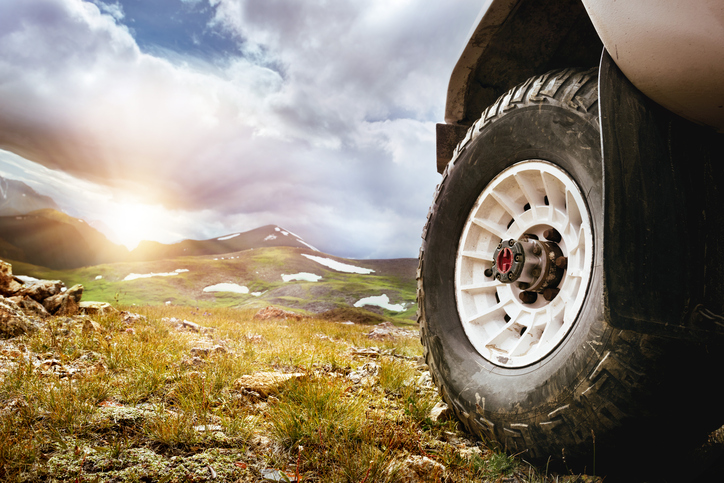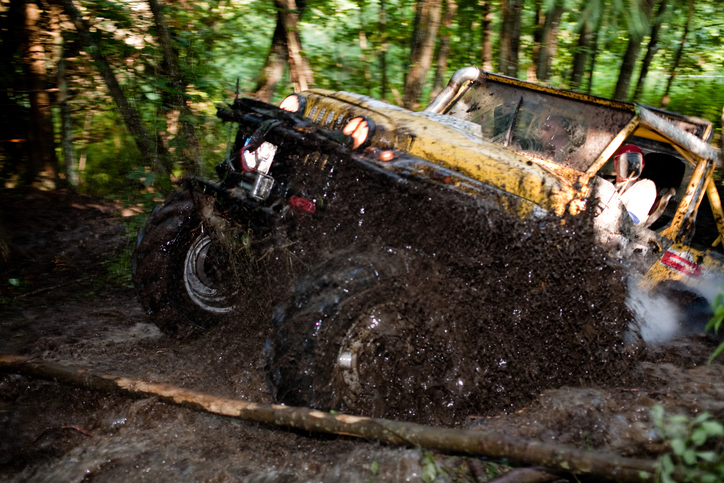
For the automotive care professional facing their first off-roader, it can be a daunting prospect. Whether a kit off-roader or a brand truck, these larger-than-life vehicles are often used for weekend excursions and come back caked with mud and debris.
While many standard cleaning techniques apply to these vehicles, there are a number of special considerations a professional should pay attention to when it comes to comprehensive detailing. Here are four tips you can use when detailing off-roaders!
Vacuum Cleaners and Power Hoses Are Your Friends When Detailing Off-Roaders
Not surprisingly, the level of dirt and grime found on an off-road vehicle is often far higher than on the average sedan. Moreover, the vehicle’s close encounters with water, mud, dirt, stones, and vegetation can wreak havoc on a car’s paint job and even its interior as passengers drag in mud, water, and dirt stuck to their shoes.
Choosing a trusted solution that cuts through dirt, and using sufficiently powerful tools like power hoses and wet/dry vacuums, will make life much easier for the auto detailer. However, care should be taken to not be too rough, especially when working on the underside of the vehicle where high water pressure can trouble rubber seals and cause damage—even on these big and tough vehicles.
Grads of Auto Detailing Courses Heed Oil Leaks and Body Damage
The underside of an off-road vehicle is often crying out for care when it arrives at the shop. This is the section of the vehicle that comes into the most direct contact with terrain whenever off-roading is carried out.
Grads of an auto detailing course know that after a thorough rinse and soap, particular attention should be paid to any indication of grease or oil accumulations, especially on the vehicle’s axle knuckles. These are the tell-tale signs of leaks, and indicate that outside particles may be sneaking into the vehicle’s interior. Dinged and damaged metalwork should be quickly flagged, including damage to vulnerable steering components or the all-important driveshaft. In some cases, a customer might need to be told that repair work could be needed.
Cleaning Lights Is Important When Working on Off-Roaders
Off-road vehicles tend to operate in areas where street lighting is non-existent, so retaining visibility through vehicle lights is absolutely essential. This means that those with detailing careers in the automotive industry will need to pay particular attention to the transparency and condition of headlights, and use polishing product that can withstand exposure to flying mud and debris.
Most modern off-roaders now opt for plastic covers, so utilizing a specialized plastic polish might be necessary after a thorough clean with a non-abrasive cloth. While body cleaning is important, off-roading with poor illumination just isn’t an option. It can be an outright safety issue, so let your detailing training light the way.

Grads of Auto Detailing Courses Know to Inspect Wheel Cavities
The majority of off-road vehicles come equipped with heavy-duty tires and wheel components for scrambling around on all types of countryside trails. However, they are all vulnerable to the wonderfully varied content of these trails. A close inspection should be carried out to ensure that mud or particles haven’t clumped in any wheel cavities, which can result in sudden vibrations throughout the vehicle. In this way, you can keep off-roaders looking good and performing well.
Want to become a trusted expert in the auto detailing sector?
Contact us at Automotive Training Centres to learn how easy it is to begin detailing, auto body, and auto mechanic careers in Cambridge.

